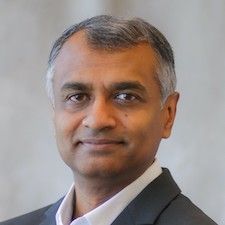Article
Histological Disease Remission Achieved in Pediatric EoE with Dupilumab
Author(s):
New phase 3 data indicates significant improvements in disease severity in children 1-11 years old with eosinophilic esophagitis.
Naimish Patel, MD

Today, Sanofi Pharmaceuticals and Regeneron announced that dupilumab therapy resulted in histological disease remission at 16 weeks in 68% and 58% of patients 1-11 years old with eosinophilic esophagitis (EoE) in the high dose and lower dose groups, respectively.
This was the first and only investigational phase 3 study that indicated positive results in children this age, and were preceded by the recent approval of the biologic in people 12 years and older with EoE who weigh at least 40 kilograms.
Roughly 21,000 children in the US under the age of 12 are being treated for EoE, yet a majority (roughly 9000) have not had satisfactory responded to any of the unapproved therapies that are currently available.
"The lack of treatment options for children living with eosinophilic esophagitis leaves many caregivers with the stress and burden of adapting their child’s meals and their entire family’s daily schedules to ensure healthy growth and development,” said Naimish Patel, MD, Senior Vice President, Head of Global Development, Immunology and Inflammation at Sanofi in a recent statement. “In some cases, they must resort to off-label use of poorly studied treatments like steroids that can pose serious health risks when used long term. The faster and larger than anticipated enrollment in this trial further emphasizes the unmet treatment needs for children with EoE and underscores the significance of these first-ever positive results.”
For this phase 3 trial, 102 children received dupilumab therapy at either a higher (37) or lower (31) dose depending on body weight, while 34 children received placebo.
In addition to the significant histological disease remission observed in both dupilumab groups, children in the higher dose group experienced an 86% reduction in peak esophageal intraepithelial eosinophil count from baseline compared to a 21% increase in the placebo group (P<0.0001).
A 0.88 and 0.84 reduction in disease severity and extent, respectively. from baseline were also recorded in the high and lower dose groups, as was a 3.5-point reduction in abnormal endoscopic findings from baseline in the high dose group.
The use of dupilumab for 1-11 year old children with EoE is currently under clinical development, as the safety and efficacy of the biologic have not been fully explored by any regulatory authority.
However, data from this phase 3 trial with be considered by global regulatory authorities and in the US later this year.





